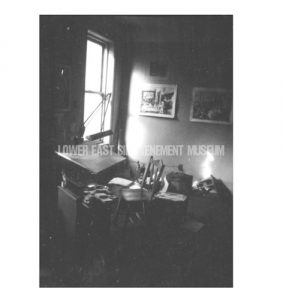
This particular page really resonated with me. For those of you who do not know (or haven’t been able to tell from my accent), I am not American. I was born and raised in Tanzania and the first time I came to the U.S. was in 2013 to start my freshman year here at Hamilton. In order to be able to legally stay in the U.S., I had to get an F-1 student visa. To do this, I had to go for an interview with the American Embassy in Tanzania. My experience was actually exactly like this man’s. I went through all the emotions the man is going through, and weirdly enough, in pretty much the same order. Below is a shortened transcript of my interview in association with the images above:
Image 1-2:
Lady: Your name and documents?
Me: (A little confused by the lack of a greeting and unable to initially understand her strong American accent.)
Image 3-6:
Lady: (Already visibly annoyed by me) Your name and documents and why you want a visa?
Me: Umm, Neema Lema. I got accepted into a college in the U.S. so I’d like a student visa.
Image 7-8:
Lady: What proof do you have of not using this visa to permanently stay in the U.S. instead of you eventually returning to Tanzania as you should?
Me: Well, I have no family in the U.S. My entire family is here in Tanzania. They will be my reason for returning to Tanzania when I’m done studying.
Image 9:
Lady: What will you study in college? And what exactly do you plan to do with your degree post graduate?
Me: I have always been interested in Economics, particularly Development Economics. Uhh, well, I am not sure now what I’ll do with my degree. I am hoping to use my years in college to figure that out.
Image 10-11:
Lady: So what you do not know what you want to do with your life.
Me: (After being extremely shocked and offended by her response, I get incredibly worried and the worst thoughts all flood into my mind: Had I just messed up my chance of getting a visa because I didn’t have a solid life plan to lay out for her? She had denied almost 10 people in a row a visa just before me so why should she break her streak now? How do I tell my family I won’t be able to attend college after the high hopes and their huge financial investment in me? I have no back up plan if college doesn’t work out, oh Lord what now?!)
Image 12:
Lady: (Silent, hasn’t said a single word to me in almost 3 minutes as she busily types things on her computer.)
Me: (Still drowning in my fears and worries for what seems like the longest wait of my life.)
Seeing as I am here at Hamilton, you can tell that this negative experience had a positive ending.
This interview was the first time in my life that I felt I was different. I had always lived in a place where everyone else was pretty similar to me. But after this interview, I felt the weight of a thousand negative labels on me- just like how they are weighing down the man in the images. I wore those labels when I started Hamilton and they made me insecure about my accent not being understood, offended by the African stereotypes people associated me with, and hurt when people did not believe that I was smart enough to belong at Hamilton simply because of where I am from. I am proud to say that I felt like I have shed all those negative labels and that helped me thrive at Hamilton. The only labels I will be wearing, and proudly so, in a few weeks will be “Hamilton graduate class of 2017,” “Economics major,” “Art minor,” “recipient of 12 academic honors.”
Shaun Tan’s lack of words helped me to easily draw on my own experience while reading this book, which elicited a greater emotional response from me than I would have had had Tan explicitly described this man’s personal experience. Tan’s powerful way of telling a story through images alone made this my favorite book of the semester.






